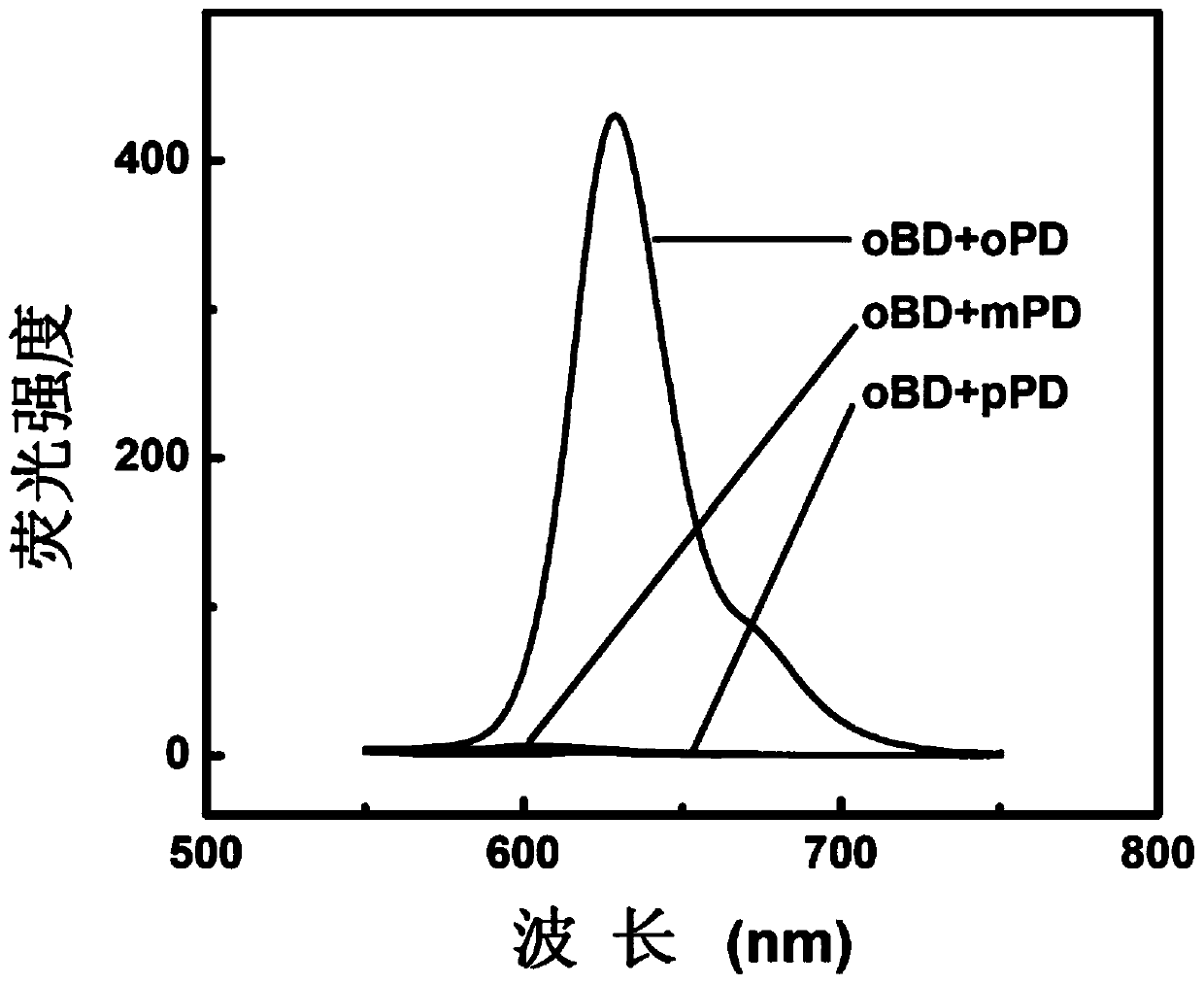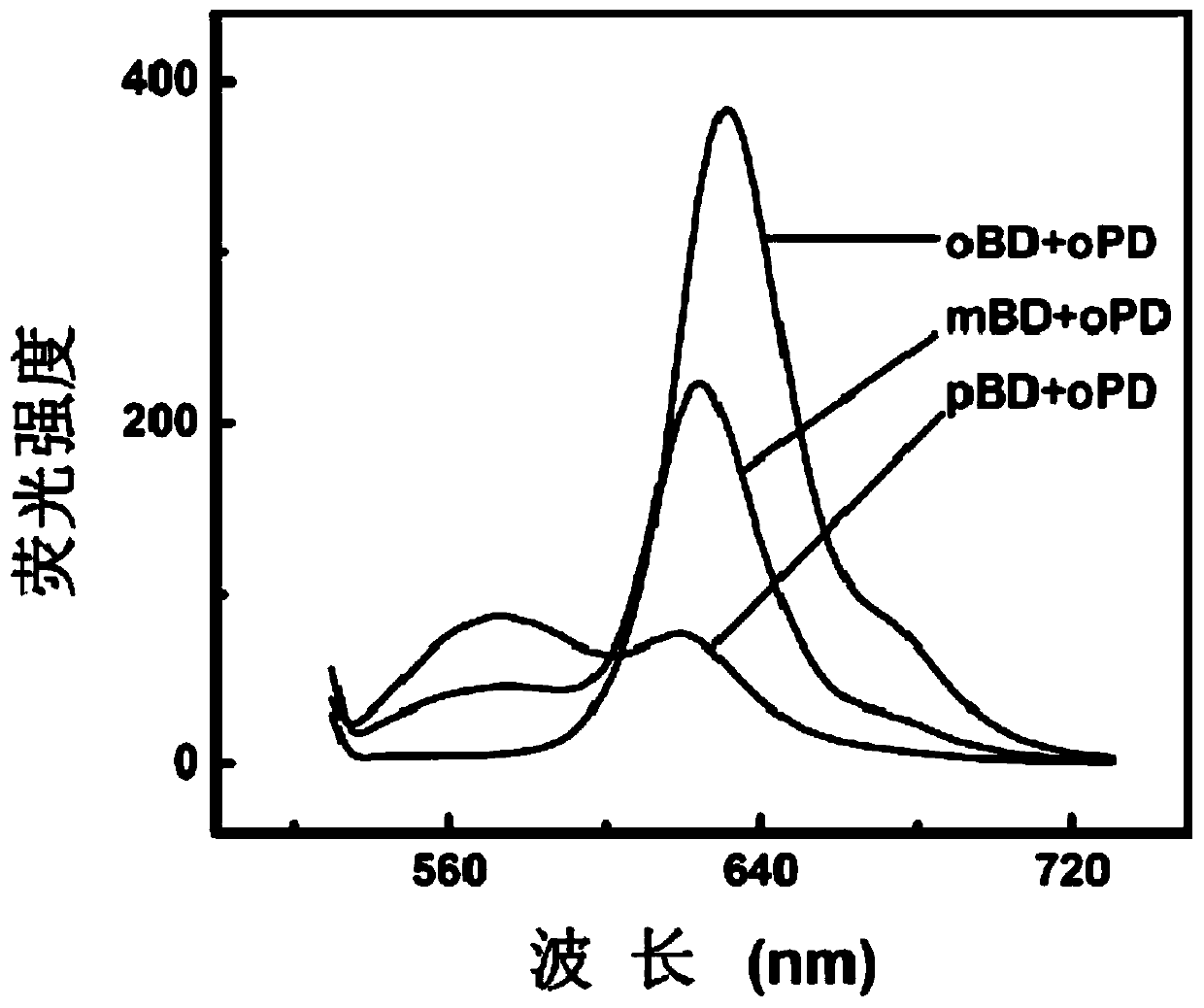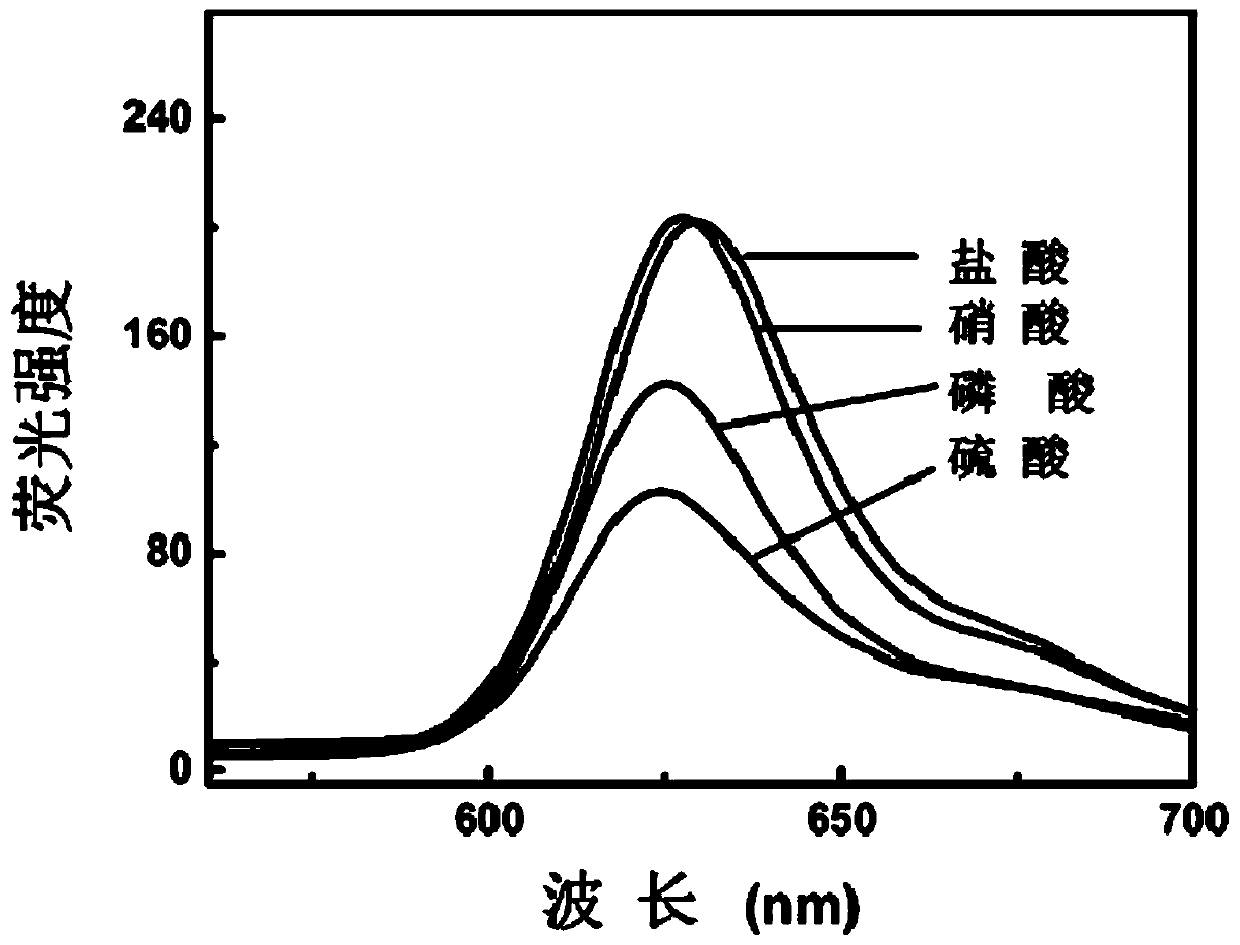Conjugated polymer quantum dot and preparation method and application thereof
A conjugated polymer, quantum dot technology, applied in chemical instruments and methods, measuring devices, material excitation analysis, etc., can solve the problems of dilute colloidal solution concentration, large solvent consumption, complex preparation process, etc., and achieve mild reaction conditions, The effect of improving the reaction yield and simplifying the reaction steps
- Summary
- Abstract
- Description
- Claims
- Application Information
AI Technical Summary
Problems solved by technology
Method used
Image
Examples
preparation example Construction
[0034] The invention provides a preparation method of conjugated polymer quantum dots, comprising:
[0035] 1) in the presence of a catalyst, the phenylenediamine compound and the benzoquinone compound are contacted in water;
[0036] 2) The pH of the reaction system is adjusted to neutral or alkaline, followed by purification to obtain conjugated polymer quantum dots.
[0037] In the above preparation method, in order to further improve the fluorescent properties of the conjugated polymer quantum dots, preferably, in step 1), the molar ratio of the phenylenediamine compound and the benzoquinone compound is 0.4 mmol: 0.1-0.4 mmol, more preferably 0.4 mmol: 0.2-0.3 mmol. Controlling the amount of phenylenediamine compounds to be greater than the amount of benzoquinone compounds can make the surface modification of the conjugated polymer quantum dots have more amino groups.
[0038] In the above preparation method, in order to further improve the fluorescent properties of the ...
Embodiment 1
[0052] Preparation of Conjugated Polymer Quantum Dots:
[0053] 1) Dissolve catechol and o-phenylenediamine in ultrapure water to prepare solutions with a concentration of 0.4mol / L respectively for subsequent use.
[0054] 2) In a 10ml centrifuge tube, add 0.8mL of 20 wt% H 2 o 2 (contains 5.33mmol H 2 o 2 ), 2ml of catechol solution (containing 0.8mmol catechol), and reacted for 3min at 25°C (after the reaction, it was detected by high performance liquid phase that the system contained 0.3mmol of catechol).
[0055] 3) Add 1mL o-phenylenediamine solution (containing 0.4mmol o-phenylenediamine) to the above solution, then add 1mL 2mol / L hydrochloric acid (containing 2mmol hydrogen chloride) to it, and react in the dark at 25°C for 4h.
[0056] 4) To the reaction system, add a NaOH solution with a pH of 11 to accelerate polymerization and precipitation. After the addition of the NaOH solution, the pH of the reaction system is 8 to stop the reaction. After the reaction syst...
Embodiment 2
[0058] Carry out according to the method for embodiment 1, difference is that o-phenylenediamine is replaced by m-phenylenediamine.
PUM
| Property | Measurement | Unit |
|---|---|---|
| particle size | aaaaa | aaaaa |
Abstract
Description
Claims
Application Information
 Login to View More
Login to View More - R&D
- Intellectual Property
- Life Sciences
- Materials
- Tech Scout
- Unparalleled Data Quality
- Higher Quality Content
- 60% Fewer Hallucinations
Browse by: Latest US Patents, China's latest patents, Technical Efficacy Thesaurus, Application Domain, Technology Topic, Popular Technical Reports.
© 2025 PatSnap. All rights reserved.Legal|Privacy policy|Modern Slavery Act Transparency Statement|Sitemap|About US| Contact US: help@patsnap.com



